Incarcerated
Courtesy of Scott Galloway, No Mercy/No Malice, @profgalloway
Regardless of skin color, sexuality, or politics, young men are falling. They are falling behind academically, failing to attach to mates, and trading potential for addiction. Their less-evolved prefrontal cortex is especially susceptible to opportunities for quick dopa hits that have been engineered by firms whose profit incentives are in direct contrast to their economic and emotional well-being. Men make up just 40% of college enrollment and one third of college graduates. They are twice as likely to overdose and 3.5 times more likely to commit suicide than women. Women also face challenges in society, especially in the labor force. However, when we discuss the challenges facing women, we ask society to change. When young men struggle, we ask men to change.
“Young men in America failing,” should be rephrased as “America is failing its young men.” We over discipline, over medicate, and overexpose them to drugs, pornography, and gambling, then blame them for their mistakes. The ways we are failing young men are legion, so let’s focus on one problem: We put too many in prison.
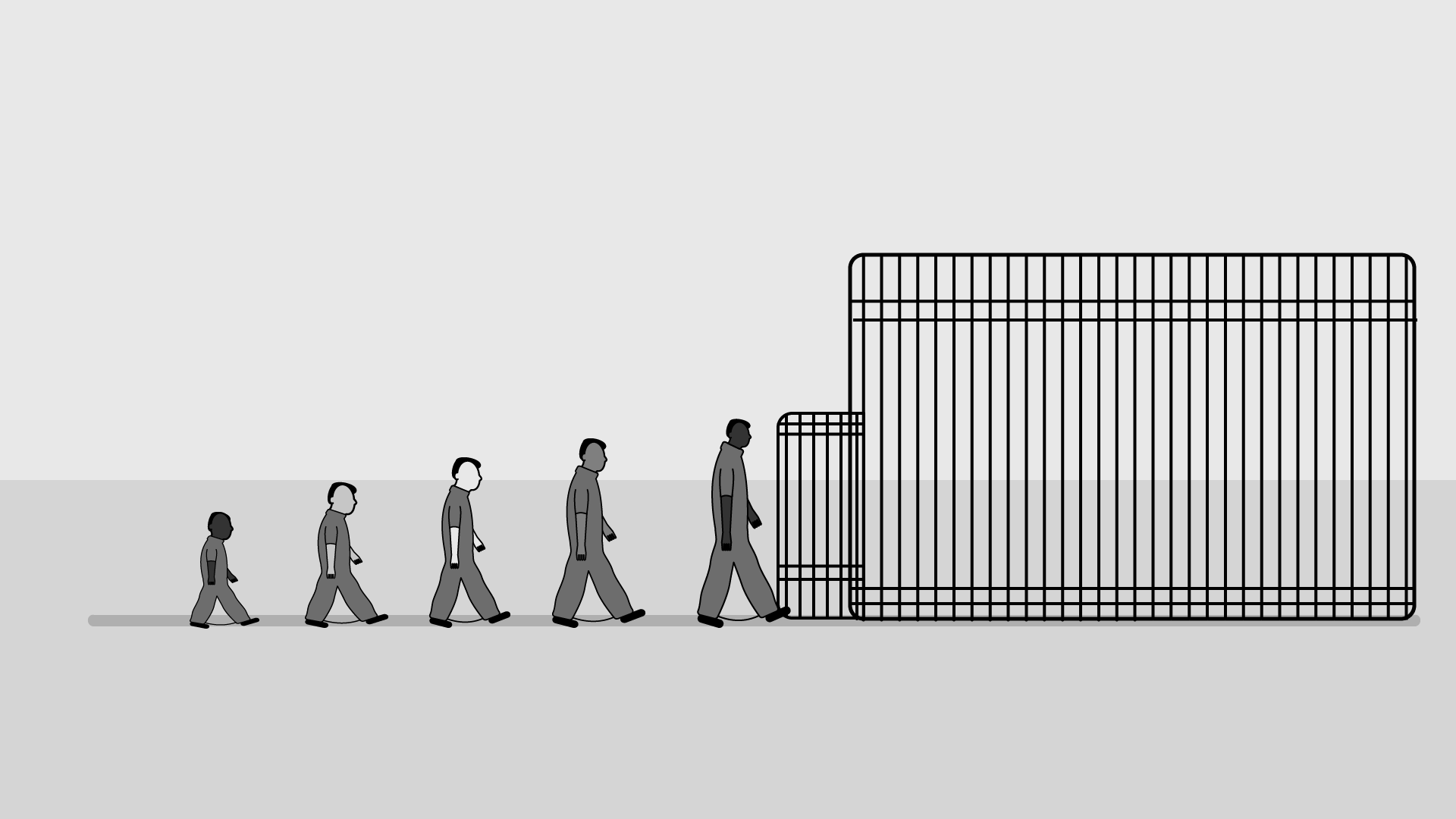
Locked Up
Two foundational truths re American imprisonment: One, we are the global leader in locking up our own citizens, by a wide margin. We rank ahead of El Salvador, which has the world’s highest homicide rate, and Cuba, an authoritarian regime that imprisons people for “pre-criminal dangerousness.” There are nearly twice as many prisoners in the U.S. as there are lawyers. There are more Americans behind bars than serving in the military or working as full-time cops and firefighters. We have fewer citizens protecting our shores and neighborhoods than neighbors we believe need to be behind bars.
Second, mass imprisonment does not work — it doesn’t reduce crime. Our unrivaled incarceration rate is neither the result of a high number of crimes nor the cause of a low one.
Our intuition tells us that incarceration reduces crime through incapacitation — taking criminals “off the street” prevents them from committing future crimes. However, the actual impact on crime rates is surprisingly small, and, at 2 million Americans in prisons and jails, we are deep into the diminishing returns. A 2014 assessment from the National Resource Council concluded that there was no reliable statistical evidence showing more than modest decreases in crime rate due to increased incapacitation. Simpler evidence? Despite imprisoning people at 10 times the rate of peer countries in Western Europe, we have a similar crime rate.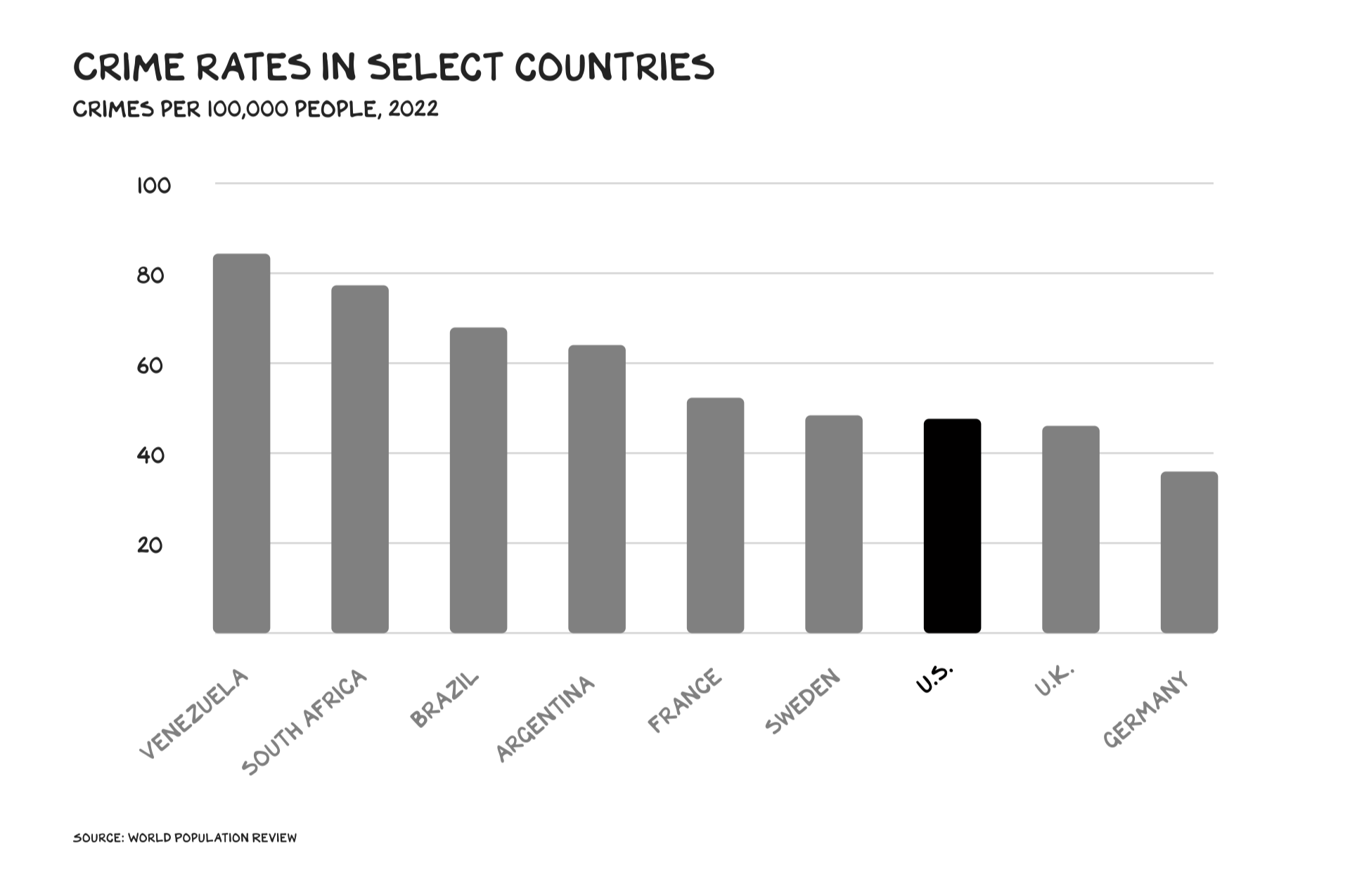
There’s a host of reasons for the limited impact of incapacitation: Many crimes are one-offs; violent crime in particular decreases rapidly with age; and a small minority of criminals commit most crimes. At bottom, though, incapacitation theory rests on a misconception that criminality is a personality flaw, that there are “bad apples” we can remove from the barrel. But most crime flows from circumstance, from failures of socialization, reductions of opportunity, and mental health issues. Poverty and discrimination are crime volcanoes, and you don’t stop the volcano by addressing the lava. Drug-related crimes are particularly resistant to reduction due to incapacitation — drug rings have no trouble finding more disaffected young men to stand on corners.
Identifying and imprisoning high-risk offenders reduces future crime, but warehousing hundreds of thousands of low-level offenders actually increases it. Dozens of studies have shown that imprisonment does not reduce an inmate’s propensity to commit crimes, and there is growing evidence that imprisonment actually encourages future crime — due to decreased legal employment options for those with a record and the exposure to violence and criminality in prison itself. Q: What’s a cause of crime? A: Prison.
We see this at scale. Once the incarceration rate exceeds 325 per 100,000 residents, crime gets worse, not better. Reductions in state prison populations during the early 2000s were associated with reductions in crime rates. Prisoner releases due to Covid were again associated with decreases in crime rates.
Longer prison sentences were sold to voters as a means of “deterrence” — scaring criminals straight. It doesn’t work. Even the Department of Justice (which runs the federal prison system) has emphatically concluded that while the threat of being caught is a deterrent, the length of the resulting prison sentence is not. In 1994, California enacted one of the toughest sentencing laws in the nation, the highly publicized “3 strikes” law, which mandated a 25-year sentence for a third felony conviction. It was sold as a deterrent, a visible, public threat to criminals. Three decades later, it costs Californians over $3 billion per year, but its impact on crime in California has been measured at “negligible” to “small” and “not nearly as large as early projections estimated.”
The War Is Over
If it is ineffective, even counterproductive, why have we locked up 2 million of our citizens? Central to the story is our 40-year “war on drugs” and the deployment of the heavy artillery of law enforcement against the nuanced, human-scale problems of addiction and teenage impulse control. From Nixon, who saw political advantage in criminalizing the minority communities who voted against him, through Clinton, whose own political calculations resulted in the most draconian crime bill in American history, locking up addicts is the definition of political opportunism.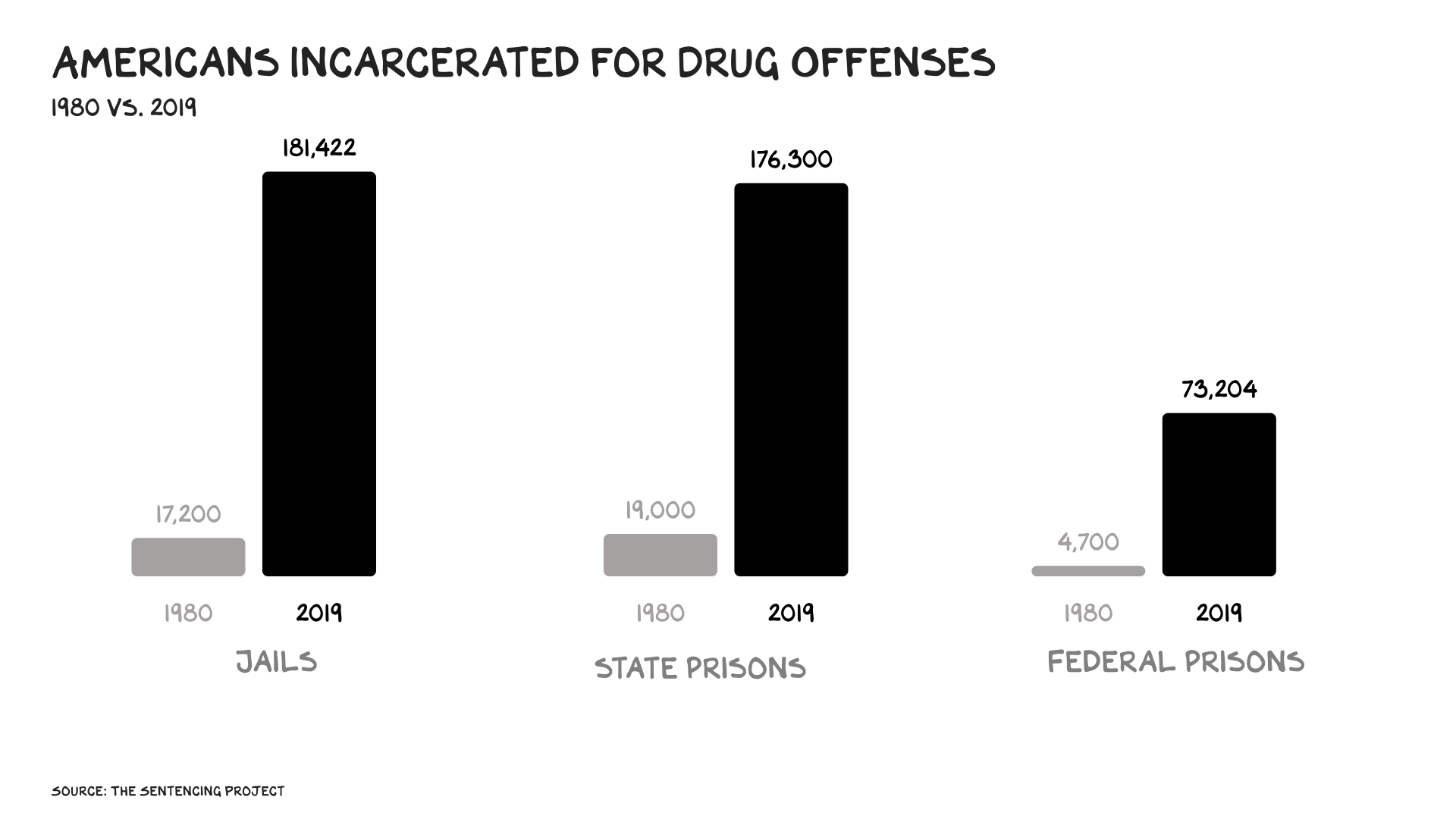
The population of people imprisoned on drug offenses jumped from 40,900 in 1980 to 430,926 in 2019, and the criminalization of addiction has fueled global organized crime empires while hollowing out our own communities. Some more than others.
Although Black and white Americans use drugs at about the same rate, Black Americans are 10 times more likely to be imprisoned for drug offenses than white Americans. One out of every three Black boys born today can expect to go to prison in his lifetime, as can one of every six Latino boys—compared to one of every 17 white boys. And that’s just the domestic burden. Ask the people of Colombia, Bolivia, or Mexico how America’s war on drugs is going. But that’s another post.
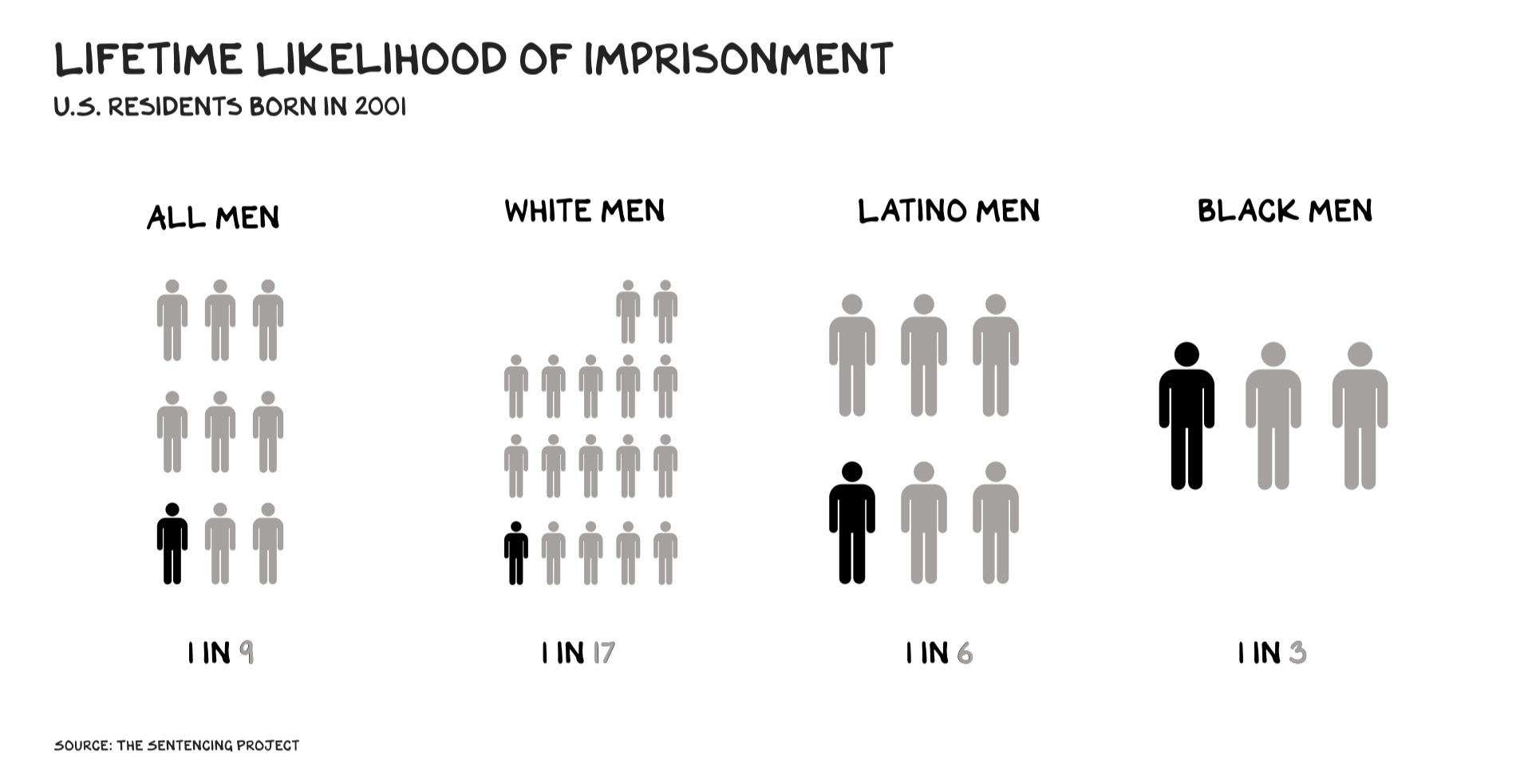
Whatever you think about how we should address poverty and drugs, and who we should hold accountable for the crimes associated with them, there’s another population grievously harmed by mass incarceration that no ideology should be set against: the mentally ill. Sixty years ago, we dismantled our public mental health system. It wasn’t a great system, but our (disastrous) solution was to replace it … with prison. Determining how many inmates have serious mental illness (major affective disorders or schizophrenia) is difficult, but the National Research Council credited estimates of 10 to 25% (versus 1 in 20 among all adults). There are “more than three times the number of seriously mentally ill persons in prisons than in hospitals.”
Defendants with severe mental illness are much more likely to be sentenced to prison. Imprisonment exacerbates mental illness, and mentally ill prisoners are two to three times more likely to attempt suicide. The mentally ill remain incarcerated four to eight times longer than people without mental illnesses arrested for the same charge and cost taxpayers seven times as much. This may be exhibit No. 1 for why American politicians have no license to invoke Jesus Christ when discussing our country. The wealthiest nation in the world incarcerates its most severely ill, its most vulnerable.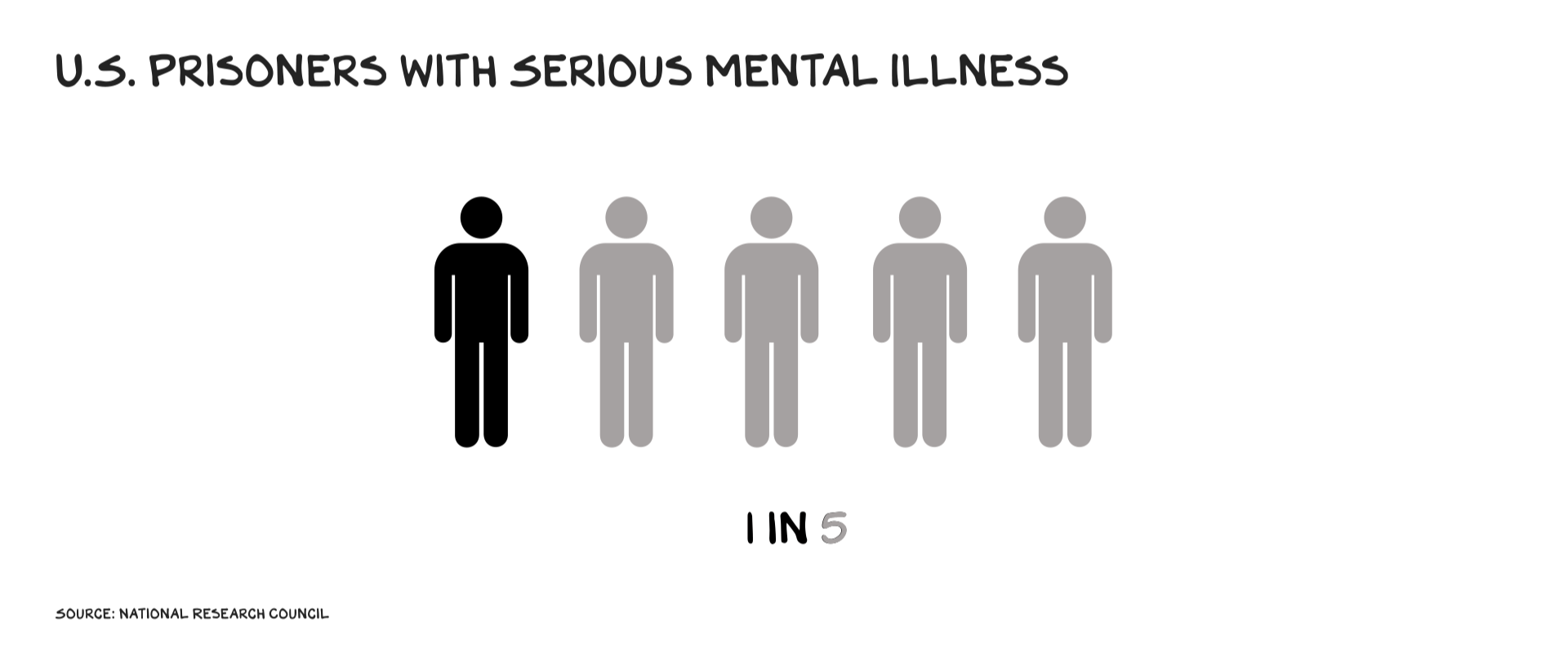
Cui Bono
Every war has its profiteers, and the explosion of incarceration in the U.S. has created an $80 billion industry. $80 billion. We spend more “protecting” Americans from other Americans than most nations spend on defense — including Russia ($63 billion). That’s right, the army thrusting the world to potential armageddon spends less on its armed forces than we spend locking up our citizens.
Eight percent of prisoners aren’t in public institutions but held in private operations run under contract with the state. Many prisons, public and private, look too much like labor camps, where prisoners work not only to run the prison itself (food service, laundry, cleaning) but also for various other state needs (prisoners really do make license plates and also furniture, uniforms, and even law enforcement equipment) for which they are paid less than $4 per day. One company alone, Corizon Health, makes $1.4 billion per year providing prison health insurance (money it needs to fight hundreds of malpractice lawsuits). The prison commissary market is a $1.6 billion annual business, and bail bondsmen generate $2 billion per year. Permitting the market to provide these services provides jobs and increases efficiency, but it is creating an incentive structure at odds with a healthy society. When companies can make billions of dollars on a thing, they get very good at persuading us to create more of that thing. Prison industry companies spend millions of dollars on lobbying and have begun investing in a new growth market: immigration detention.
Left Behind
Mass incarceration has a direct and brutal impact on young men: 93% of prisoners are male, and 41% of adult prisoners are under the age of 35. How prison hampers a young man’s growth is self-evident and not worth dwelling on here. Because there’s a second population of young men we need to discuss.
Roughly half of U.S. prisoners are parents. As soon as a parent steps into prison, their children’s outcomes decline significantly. A child of an incarcerated parent is five times more likely to go to prison. Their cognitive development is stunted, leading to academic failure, and they are more likely to act aggressively in the future.
The impact of having a parent in prison is more pronounced for boys than girls. Studies show that, without a father, boys engage in more delinquent behavior; meanwhile, adolescent girls’ behavior is largely independent of the father’s presence. The increase in aggression due to paternal incarceration is also twice as high in boys than in girls. Boys simply have less emotional resilience than girls, and they’re more vulnerable to stressful situations than girls. Boys are physically stronger, and girls are stronger.
Freedom
To summarize: we have 10 times the number of people in prison than a nation our size and prosperity should. Spending an extra $72 billion a year and keeping an additional 1.8 million people in prison does not make us safer — it might actually increase crime. And it poisons the well for millions of boys who become more likely to end up in prison themselves.
Signs
There have been signs of progress. President Trump signed the bipartisan First Step Act in 2018, a small but significant set of reforms. There are many more opportunities to eliminate harsh sentencing laws, and we should invest in educational and job training programs and pass “clean-slate legislation” to help those leaving prison reenter society. President Biden announced that he’s starting the process to effectively legalize marijuana at the federal level and will simultaneously pardon everyone with a federal conviction for simple possession.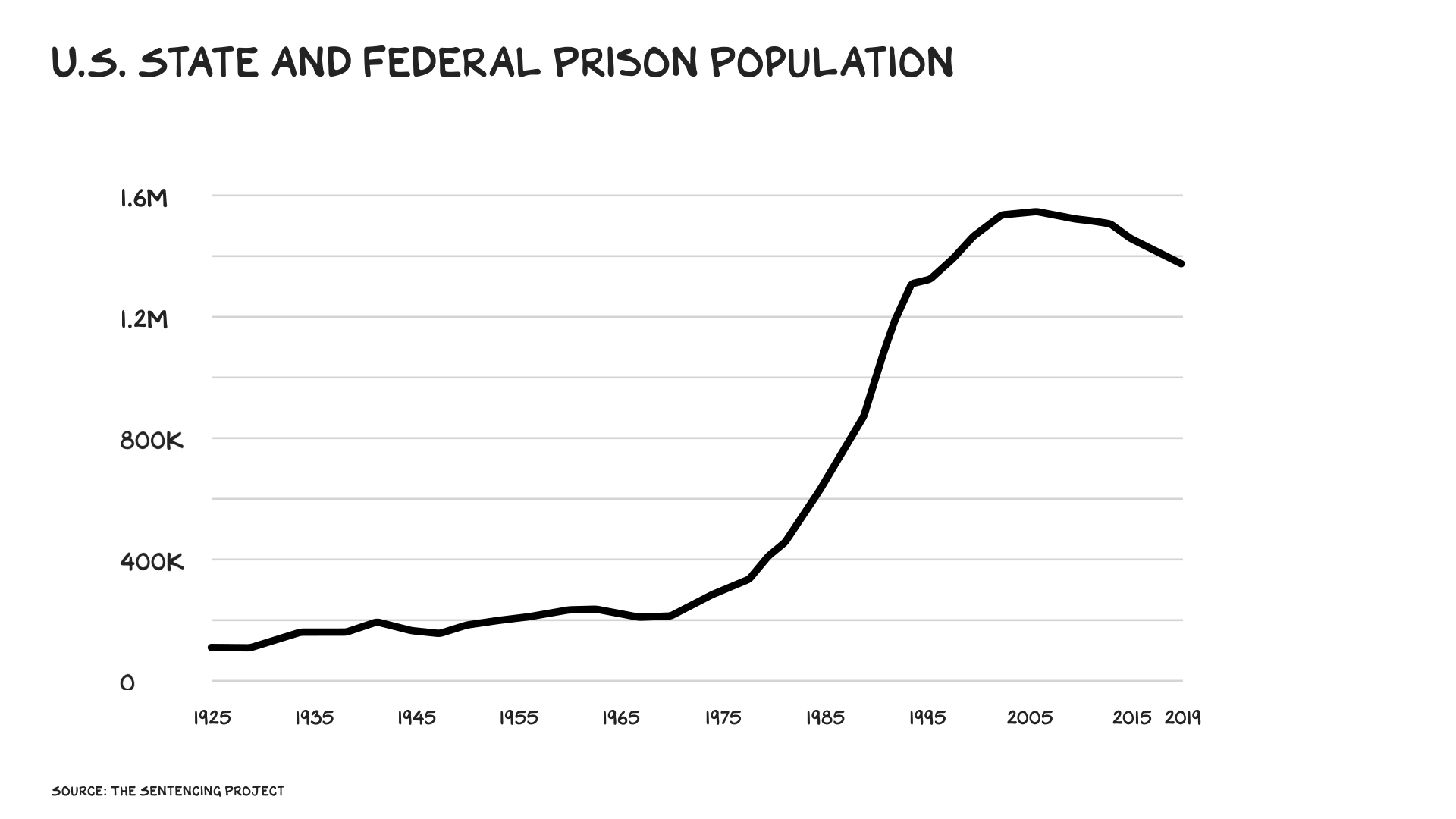
We need to send less people to prison, and start letting people in … out. Diversion programs for drug offenders and the mentally ill are incredibly successful and should be more widespread. Just one example: In Miami, a program to divert mentally ill defendants into treatment rather than jail has cut the county jail population in half, saved taxpayers $50 million per year, and cut recidivism among diverted defendants from 75% to 20%.
Breaking our national addiction to incarceration will require a decade-long, massive prison release program. Which in turn will require a serious investment in true rehabilitation: mental health care, addiction treatment, job training, and re-entry programs. We need fathers (and mothers) back in homes and to stop holding millions hostage for political and financial gain. If we are serious about helping young men, we need to return more men to the community. The incarceration of the populations of Miami, Atlanta, Cincinnati, and Memphis combined has left a void that creates a downward spiral of despair and more incarceration for the boys in that community.
There will no doubt be well-publicized examples of crimes committed by people recently released, and they will skew the perception of the program’s success as crimes not committed can never receive attribution and make for shitty headlines. The illusion of complexity fomented by corporations and incumbents insinuates these problems are multidimensional and intractable. They are half-right. There is a fix that will have an enormous positive impact. Simply put, boys need more men.
Life is so rich,
![]()
P.S. Our highest-rated sprint, The Product Positioning Sprint, is running in a few weeks. This one is great for B2B marketers and early-stage startup leaders who are trying to differentiate in a crowded market. Sign up here.



